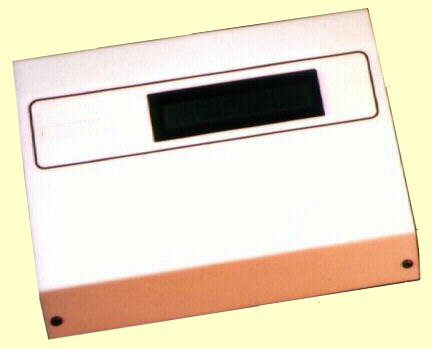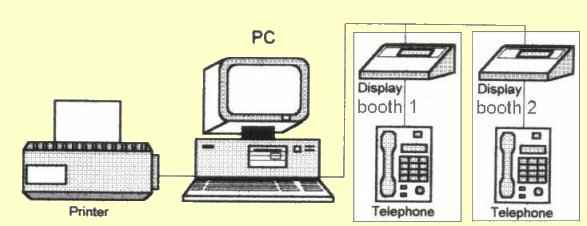

| The main idea to use telephone
kiosk instead of normally payphone (coin or card) is for some people
dealing with machine is uncomfortable, of course hard to find for coin
and card at several places is another problem.
In this telephone kiosk consumer dealing with the attendant. Consumer use the phone to call to anywhere like they use usual phone, talk and then put the phone when finished. The telephone kiosk equipment which equip with a printer will print the receipt for that call. The consumer pay to the attendant the cost as printed on the receipt. |
||
| To do that function the complete
telephone kiosk is equip with a usual telephone handset and a display which
will place at the booth, and a printer which will place at the attendant/operator
room.
|
 |
|
| With a display at the booth,
consumer could monitor how much money he has already spend for his call.
This is the forst variant of our Telephone Kiosk Equipment, Single Booth Telephone Kiosk. Actually we only produce the display which connected to the PSTN, telephone handset and to the printer. |
||

| The second variant is Multi Booth Telephone Kiosk. In this system single attendee could serve more than one booth. Several booth (up to 16 booths) could be monitored from a Personal Computer which connected to a printer. The equipment at the booth almost same with the Single Booth one, except they don't have any printer interface. Every display at each booth connected to each other by a six wires telephone cable, and the last one connected to the PC. Every call from the booth can be monitored at the PC and will be printed when the call is finished. | ||

| The third variant is a mini version of Multi Booth variant. In this variant the PC being replaced by an embedded version which could handle up to four booth. The main goal of this variant is to omit the expensive PC which over capability to handle only four booth. The mini monitor has sized and figure like the booth display except it has keypad for some control function. | ||
| Technical Specification | ||
| Dialling | DTMF
Input > 50 mV rms Signal detect > 40 ms Inter digit > 40 ms Option : Pulse Dialling |
|
| Input Impedance Detector | > 200 kohm | |
| Tone Detector | Input > 200 mVrms
Frequency : 450 +/- 75 Hz |
|
| Answer Signal Detector | 16 kHz , Repetitif Charge
Input > 50 mVrms option : Polarity Reversal / 16 kHz Single Charge |
|
| Time Standard | < 7 seconds/week | |
| Telephone Set | DTMF
option : Decadic ( still need DTMF fro programming) |
|
| Display | 2 x 20 character, back-light LCD | |
| Programming
(for single booth version) |
DTMF
Menu system |
|
| Printer | 80 columns Dot Matrix Printer | |
| Monitor Software
(for multi booth version) |
Menuing system
Password protection Active Operator Log Reporting facility Data maintenace - Call data - zoning data |
|
|
|
|
|